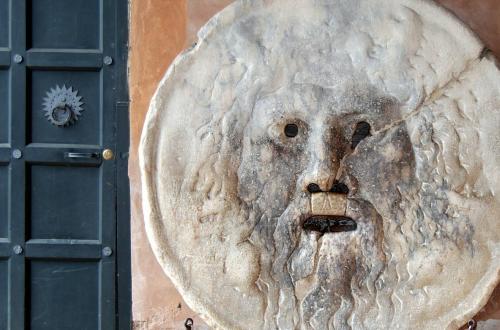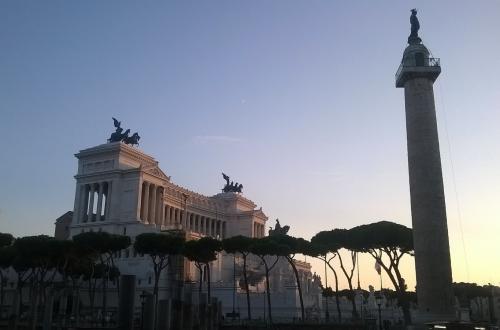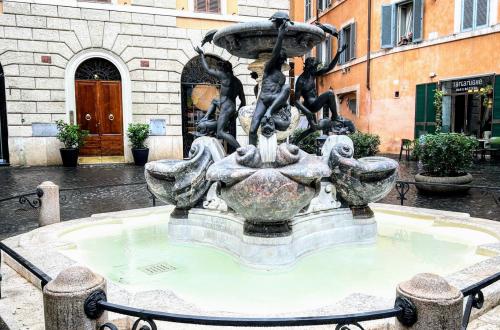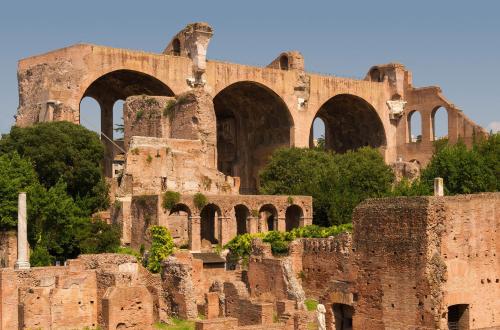L’Amphithéâtre Flavio (Colisée)

 Condividi
Condividi
An archaeological site very important for ancient Rome that comprises the area between the temple of Apollo and the temple of Bellona.
In 630 Onorio I ordered the transformation of the "Curia Iulia" into a church, nonetheless maintaining its original role of aula for the Senate’s meetings.
Built in 1700, the Complex was over time used as a storage area for weapons, military equipment and the storage of papal ships.
Work began on the building in 1914 to make it the seat of the Court of Auditors.
Leaning on one side of the right fornix of Porta Flaminia, the fountain was built in 1886, as commemorated in the Municipal coat of arms that surmounts it.
This fountain designed by the architect.
This fountain is placed in the courtyard in front of the church of Santa Cecilia.
Situated in the surroundings of Porta San Sebastiano, the fountain was built reusing ancient materials.
The fountain was placed in front of the church.
This fountain was inaugurated on 21 April 1925. It consists of a huge central cup made of Pentelicus marble, obtained by reassembling ancient marbles.
The fountain leans against the wall below the church of San Pietro in Montorio, to the restoration of which refers the memorial tablet with coat of arms of Urban the Eighth Barberini (1623-1644) th
[...]In 1861 pope Pious the Ninth (1846-1878) built a fountain called “dei delfini” (of the dauphins) in the square dedicated to him to replace the more ancient one commissioned by Paul the Fifth Borghe
[...]The fountain consists of a granite pond with two side masks that rests on a support placed in the middle of a larger oval marble pond.
The Fontana dei Putti or del Biscione was commissioned in the early twentieth century by George Wurts and his wife Henrietta Tower, owners of the former Barberini Sciarra villa from 1902.
The fountain was built in 1830 by the architect Luigi Canina with the main function of creating a backdrop to the monumental entrance on Piazzale Flaminio, at the end of the long avenue shaded by h
[...]The fountain of the Timone (Helm) leans against the huge building of San Michele a Ripa.
The fountain was originally placed beside to the church of Santa Maria delle Grazie that was demolished when Piazza Risorgimento was opened.
This fountain with Anfora (Amphora) was built in 1931 by the architect Raffaele De Vico and is located inside the September 8 Resistance Park, originally named Cestio Park in reference to the nearb
[...]The fountain dell’Orso (of the Bear) was commissioned by the Municipality of Rome at the beginning of the twentieth century.
This fountain is part of the group of ten small fountains commissioned by the Municipality for the districts to the sculptor Pietro Lombardi, which were all inaugurated in 1927.
The Roman pool, dated to the 2nd-3rd century AD, is made of red granite and has an elliptical plan, with a flared body and ample height.
This fountain was originally built in 1586 under Sixtus the Fifth Peretti (1585-1590) by the architect Domenico Fontana, as reported by the epigraph placed in the arch of the door nearby.
Built in 1589 by Giacomo Della Porta, the fountain consists of a boat-shaped pond with a decorated shaft on a cube base that holds a basin.
The fountain in Piazza Cairoli, once called Piazza Branca, is situated at the centre of a garden. It was built in 1888 by Ed Andrè, as remembered by an engraving in a corner of the socle.
The wall-fountain fed by Acqua Vergine in Piazza della Cancelleria is a work by Publio Morbiducci winner in 1928 of a competition announced by the Municipality for the replacement of ten small cast
[...]Commissioned by Paul the Fifth Borghese(1605-1621) and designed by Maderno, it was built in 1614 and placed in Piazza Scossacavalli in front of Palazzo Campeggi, residence of cardinal Scipione Borg
[...]The fountain is a work by V. Cafiero and was inaugurated in 1928.
The fountain is placed at the foot of a colossal fluted column with a Corinthian capital, coming from the Basilica of Maxentius.
The two inscriptions with the pope’s coat ofarms that dominate the fountain commemorate the building of the fountain in 1565 under Pious the Fourth Medici (1559-1565) and its restoration in 1713 un
[...]
 Condividi
Condividi

 Condividi
Condividi

 Condividi
Condividi

 Condividi
Condividi

 Condividi
Condividi

 Condividi
Condividi